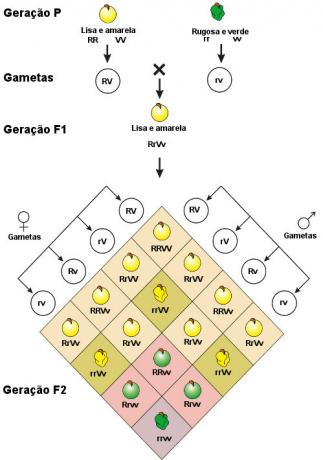Adaptive irradiation is an evolutionary process that occurs when an ancestral group colonizes different environments and can give rise to other species.
When colonizing new environments, each group is subjected to different environmental conditions. Thus, it makes possible the emergence of a wide variety of life forms. THE natural selection allows the survival of the fittest.
The geographic isolation between the ancestral groups allows the speciation, the process of formation of new species.
In short, adaptive radiation corresponds to the emergence of species, in different environments, from a common ancestor.
One adaptive irradiation example is the diversification of mammals. This group of animals has a common ancestor and are adapted to different types of habitats, such as terrestrial, aquatic and aerial.
Adaptive irradiation gives rise to homology. Homology refers to similarity between structures of different organisms, due to the same embryological origin. In this case, structures may or may not perform the same function.
Based on the adaptive radiation of mammals, they are homologous structures: the upper limbs of man, the horse's foot, the whale's fin and the bat's wing.
Learn more about Natural selection and speciation.
Adaptive Irradiation x Evolutionary Convergence
While in adaptive irradiation a common ancestor colonizes different environments and gives rise to new species. In evolutionary convergence, different ancestors live in the same environment, experience the same selective pressures, and become similar in some respects.
Evolutionary convergence can be summarized in the adaptation of different organisms to the same environmental condition. An example is the similarity between the body shapes of dolphins and sharks, two different species that live in the aquatic environment.
Evolutionary convergence begets analogy. Analogy refers to the morphological similarity between structures that perform the same function. An example is the wings of butterflies and bats. Although they are not of the same species, they live in the aerial environment and have similar structures.
Thus, through evolutionary convergence, unrelated organisms can develop similar structures and body shapes due to adaptation to the same environments.
Want to know more about Evolution?. Read too:
Darwinism
Neo-Darwinism
Phylogeny



